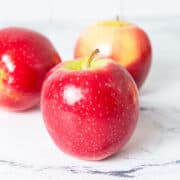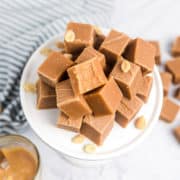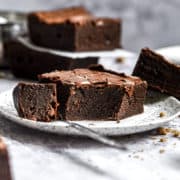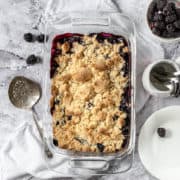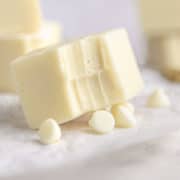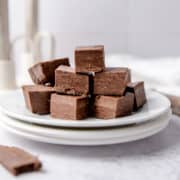Apples are always a popular choice at the grocery store and there are many types to choose from. Whether you prefer a tart-tasting Granny Smith or a shiny red-skinned apple, it's important to know how to store apples to keep them fresh and delicious for as long as you need.
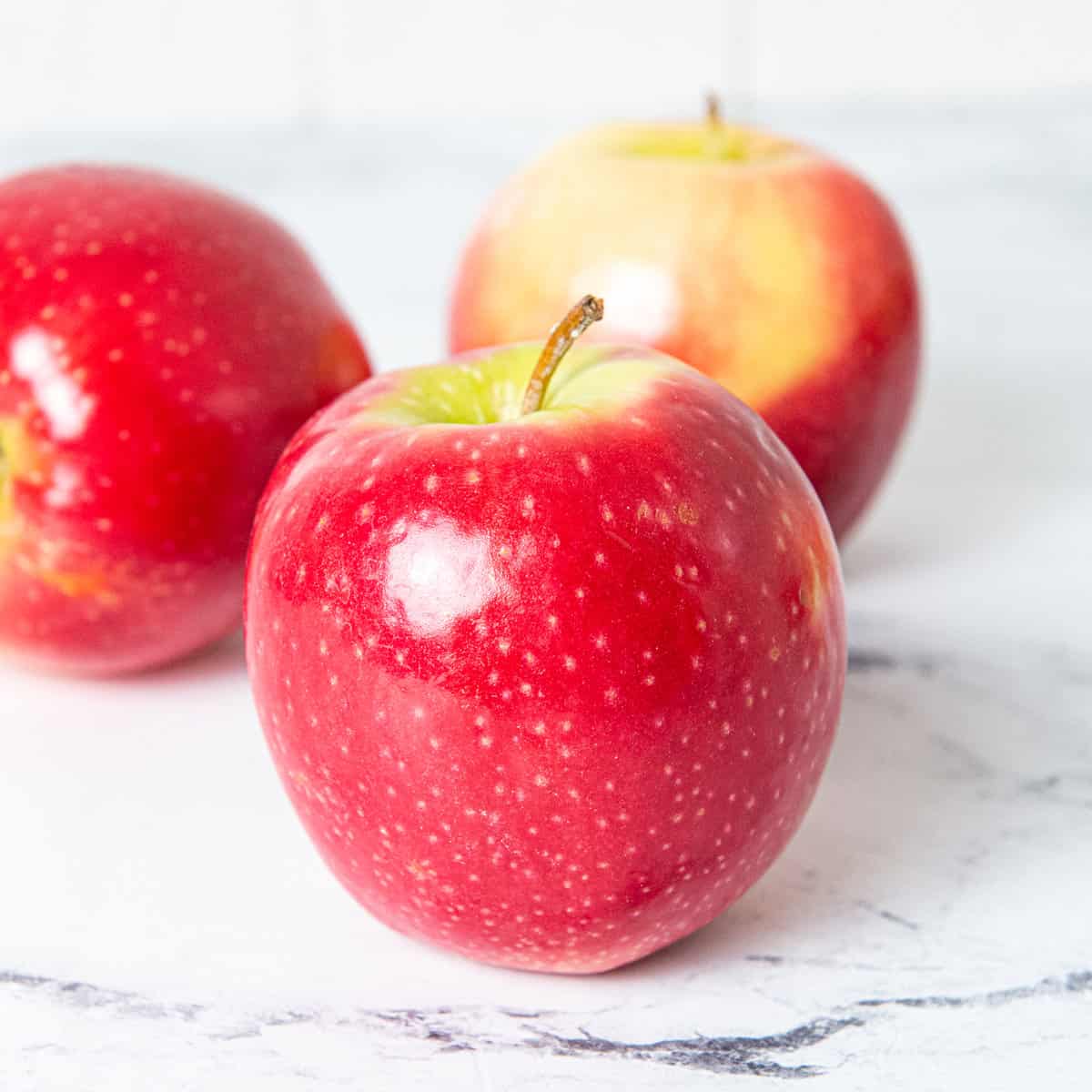
Jump to:
An apple makes a tasty, crunchy snack and this popular fruit is also used in a wide variety of baked desserts, including apple turnovers and apple pie. You can find apples in just about every grocery store and market, and most people enjoy their flavor. Whether served raw as a snack or cooked like applesauce, the flavor of an apple is very distinctive.
More than 7500 apple varieties exist today, each with its own slightly different taste, ranging from tart to very sweet. It's important to choose the right apple for the right recipe, for example, a firm-flesh type such as Jonagold or Honeycrisp which will hold together well for baked apples, or something more mouth-puckering like Granny Smiths for apple crisp bars.
What are Apples?
One of the most popular fruits in the world, apples (Malus Domestica) also boast nutritional benefits. They are a good source of antioxidants, fiber, potassium, and Vitamin C. So although the popular saying "an apple a day keeps the doctor away" might not be completely factual, biting into a crisp apple certainly does offer health benefits.
Although apples are mainly grown to sell as fresh fruit, they're also used as an ingredient in a variety of items like applesauce, vinegar, fruit juice, pie filling, apple butter, and much more. Caramel apple slices are always great around Halloween.
I love to make applesauce. I peel and chop apples and then add a splash of water and simmer until soft enough to mash. It's really good like that, but you can also add a pinch of cinnamon for spice or some sugar or sweetener if you prefer a sweeter result. I know you can get applesauce from the store, but homemade really is best! And it freezes well too.
A lot of the world's apple crop is used to make wine, apple cider, and brandy. Fried apples are a popular accompaniment to various pork and sausage recipes in Europe, while apple pie needs no introduction and is the quintessential North American dessert. Apples are a popular addition to homemade juices and smoothies and pair with all kinds of wonderful flavors.
How to Choose the Best Apples
Selecting store-bought apples depends partly on what you're planning to do with them, such as whether to plan to make cranberry apple muffins or just want to add something healthy to your kids' box lunches. Once you decide on the variety of apple you want, there are a few ways to check for optimal freshness and quality.
Reject apples with large bruises or soft spots. While a small bruise doesn't necessarily mean the apple is bad, rotten parts do. Like most other fruit, apples can get damaged during transit. Sometimes they get little cuts and nicks which means the exposed flesh can turn brown and begin to spoil.
A glossy skin is not an indication of apple freshness because wax is often added to make the apples glossy which attracts buyers. Apples that have started to rot will have a bad smell, so unless you're buying apples in sealed plastic bags, it's a good idea to give them a sniff, just to check they smell good.
Apples naturally tend to be yellowish-green, green, or red when ripe and those with a bright color have absorbed plenty of sunlight which makes the flavor good. If a red apple has green patches this is an indicator it isn't evenly ripe. An apple that is firm if you squeeze it gently should be fresh, while if it's much it's probably a bad apple.

How to Store Apples
Once you've got your apples home, you'll want to store them in the best way to keep them fresher for longer. Like many other fruits and vegetables that like a root cellar-type environment, fresh apples last for longer when kept somewhere dark and cool.
Although they're often sold at room temperature at the store, this makes them turn mealy and rotten quicker. They will keep for a while outside of the refrigerator during the winter months, but in the summer you should refrigerate them unless they are going to be used within a couple of days.
- Keep fresh juicy apples in a dark, cool place, such as in the refrigerator crisper drawer, where they will last for up to 2 months.
- The ideal temperature for keeping sweet apples fresh is between 31°F and 35°F. They will start to freeze around 29°F.
- If you have a lot to store, a garage, enclosed porch, or unheated basement will work for long-term storage, as long as the weather isn't hot.
- Keep the apples in their original packaging and away from other fruits and veggies.
- One rotten apple will spoil the bunch, so discard any that are bad.
- Cut apples should be tossed with lime or lemon juice (to stop them from browning) and then kept in an airtight container.
- If you want to freeze apples, pack them in a freezer bag, eat them within a year, and use them in a cooked apple recipe since the texture will be much softer.
How to Tell if Apples Are Rotten
Although when stored properly apples can last for months after being picked from the apple tree, a bag of ripe apples can still contain a bad one or two, so it's worth checking them.
A rotten apple will be soft and mushy and smell bad. Brown splotches are another bad sign, but if there is only a small brown area you can just trim that part away and use the rest.
Common Questions
If you have an apple tree, you might be wondering about the best place to store the whole bunch of apples or several late-season apples. The best way to store whole apples over the winter is to wrap each fruit in a piece of newspaper or paper towels and then arrange them on a tray in individual layers. Use paper not plastic for air circulation. An old filing tray would work or you might want to invest in an apple rack. And if you have a cool basement, that's a nice dry place to keep them.
Since there are so many apple varieties, you will find some have thick skin while others are more thin-skinned. As a general rule, thick-skinned apples work better in salads or for snacking, while thin-skinned ones are better for baking.
Apples are coated thinly in a layer of wax. Although synthetic apple wax is added sometimes to make the apples look more appealing, this fruit also produces its own. This wax helps the apples survive transportation and helps prevent moisture loss. It's safe to eat although some people prefer to rinse or wipe it off with a damp paper towel before eating.

Fun Facts
- Some of the best-known types of apples are Granny Smiths, Red Delicious, and Honeygold (my favorite).
- Apples are a member of the rose family and are related to peaches and almonds too.
- An apple tree takes between 5 and 8 years before it starts to produce fruit, but if you like apple picking it's worth the wait!
Now you know how to store apples the best way, the good news is you can enjoy this delicious, versatile fruit as a snack or as part of a recipe whenever you want.
